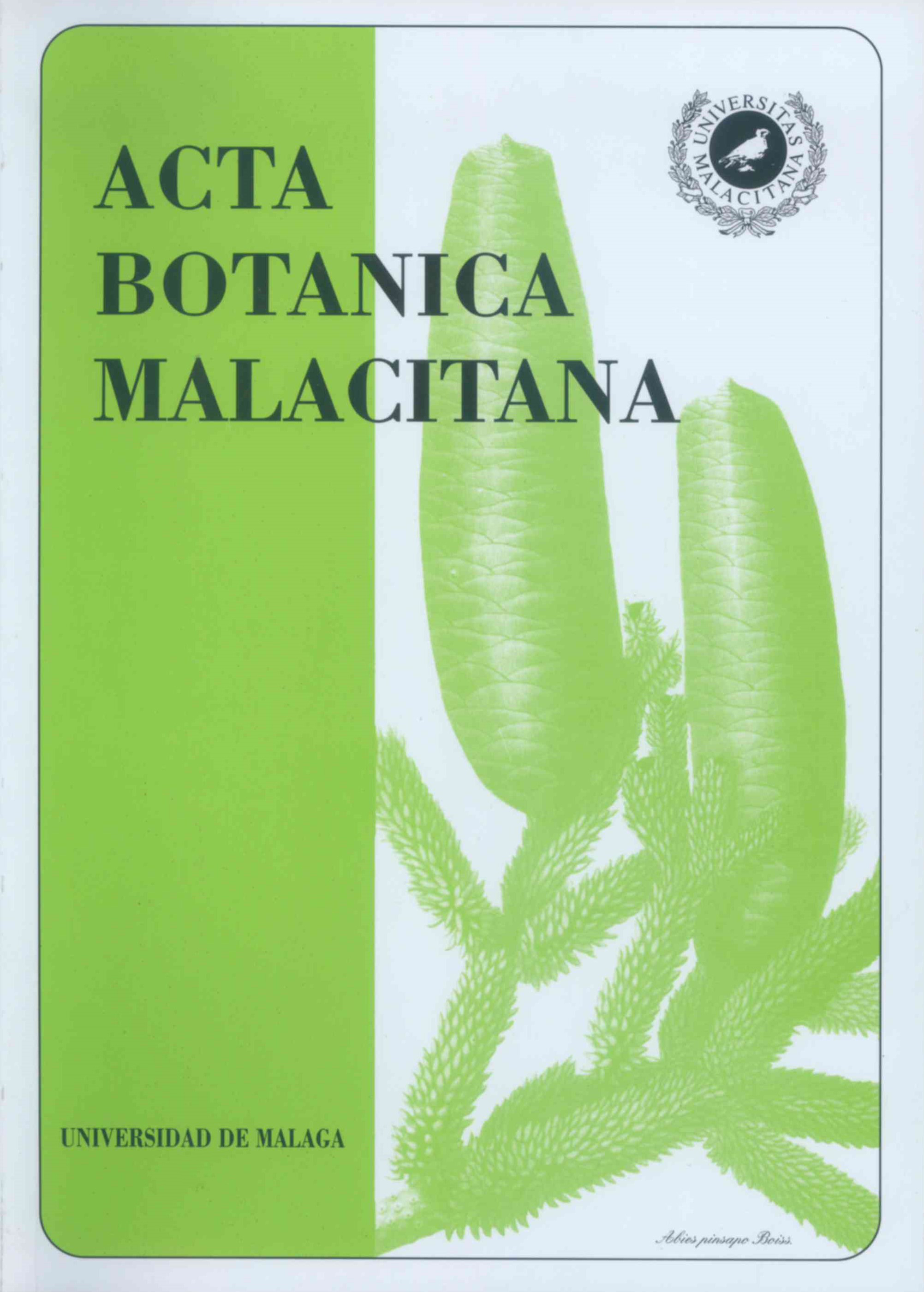Flora brio-pteridoli?tica de los bosques lauroides de Rhododendron ponticum L. del Parque Natural de los Alcornocales (Ca?diz-Ma?laga, Espan?a)
DOI:
https://doi.org/10.24310/abm.v28i0.7263Abstract
RESUMEN. Flora brio-pteridolítica de los bosques lauroides de Rhododendron ponticum L. del Parque Natural de los Alcornocales (Cádiz-Málaga, España). Se ha estudiado parte de la diversidad brio- pteridofítica en el Parque Natural de los Alcornocales (Cádiz-Málaga; Sur de España). Nos hemos centrado en las comunidades caracterizadas por la presencia de Rhododendron ponticum, uno de los hábitats más representativos del Parque por su originalidad. Para ello hemos muestreado 23 localidades repartidas por todo el Parque y que varían por sus características climáticas. Se han identificado 171 especies de las que 111 son musgos, 2 antocerotas, 42 hepáticas y 17 helechos. Para cada una de las localidades (canutos) se aporta su diversidad total y las especies más representativas y exclusivas. Pretendemos contribuir con ello a una correcta identificación de zonas susceptibles de ser tenidas en cuenta para futuros planes de zonificación y conservación de este tipo de comunidades, únicas y frecuentemente olvidadas en los planteamientos conservacionistas a nivel regional y nacional.
Palabras clave. Briófitos, pteridófitos, Rhododendron ponticum, bosque lauroides, Los Alcornocales, Andalucía, Península Ibérica.
ABSTRACT. Bryo-pteridophytic flora in the lauroid forests (Rhododendron ponticum L.) of the Natural Park Los Alcornocales (Cadiz-Malaga, Spain). A great part of the bryo-pteridophytic diversity of the Natural Park of Los Alcornocales (Cadiz and Málaga provinces, Andalusia, south of Spain) has been studied. The study has been focused on the woody lauroid, relic communities of Rhododendron ponticum L., one of the more representative habitats of the Park because of its singularity. 23 localities extensively distributed in the Park have been inventoried, taking into account climactic variability. 171 species have been identified: 111 mosses, 2 anthoceros, 42 liverworts and 17 pteridophytes. Total species diversity and the most representative and/or exclusive species are given for each locality. We want to contribute to identifying areas to bear in mind for future conservation and land planning for this kind of communities, unique and frequently forgotten in territory politics at regional and national levels.
Key words. Bryophytes, pteridophytes, Rhododendron ponticum, lauroid forests, Los Alcornocales, Andalusia, Iberian Peninsula.
Downloads
Metrics
Downloads
Published
How to Cite
Issue
Section
License
All information related to the licensing of published works in Acta Botanica Malacitana and copyright can be found in our Editorial Policy.







1.png)
